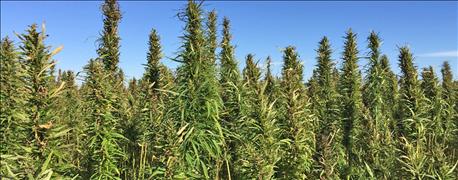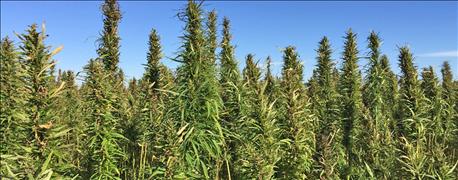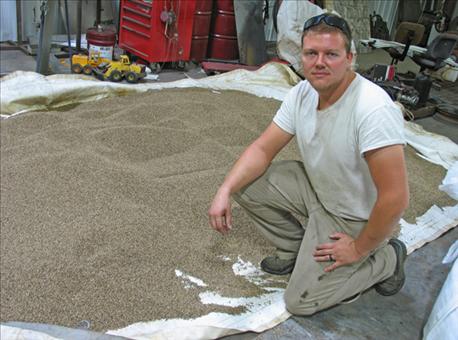November 17, 2016

Five North Dakota farmers grew a historic crop in 2016. They produced about 80,000 pounds of industrial hemp seed.
Industrial hemp was grown as a legal crop in North Dakota for the first time under a pilot program supervised by the North Dakota Department of Agriculture.
The 2014 Farm Bill included a provision to allow universities and state agriculture departments to legalize industrial hemp cultivation to conduct research and pilot programs to develop more data about the viability of hemp as a crop.

SUCCESS: Industrial hemp seed grows tall in North Dakota.
“In a state where we produce over 50 different commodities commercially, I’m all for looking at some different cropping rotations and systems,” says Doug Goehring, North Dakota agriculture commissioner. “This looked like an opportunity to do something more with it.”
North Dakota State University had conducted small trials with industrial hemp in 2015, “but it didn’t give us a good snapshot of geographical differences and soil types and everything across North Dakota,” Goehring says. “I wanted to explore the agronomic aspects of growing industrial hemp.”
The industrial hemp program was conducted as research trials with farmers who planted, grew and marketed the industrial hemp under the agriculture department’s oversight.
Seventeen applicants were narrowed down to five producers: Clarence Laub II, Elgin; Jamie Edwards, Adrian; Lyle Edwards, Adrian; David Lommen, Maddock; and Roger Gussiaas, Carrington, who is also a processor.

HARVEST: Clarence Laub II dried his approximately 5,000 pounds of industrial hemp harvest on tarps before taking it to a processor in Carrington.
Four different varieties were planted, ranging from the fibrous type that grows up to 12 feet tall to the grain production varieties that grow up to 6 feet tall. The agriculture department obtained all the seed for the producers from Canadian suppliers.
Yields ranged from about 500 to 1,200 pounds an acre.
“Soil types are going to be an issue. Moisture is certainly an issue. Too much moisture and poorly drained soils are not going to work well either,” Goehring says. “Industrial hemp does not like having wet feet. It seems in drier environments, it’s worked fairly well.”
Laub had researched the benefits of industrial hemp being grown in other states before he enrolled in the state program.
“Seeing the success farmers are having with it, it seemed like a pretty exciting thing,” he says.
He planted 10 acres June 1, and seeded two varieties into wheat stubble. It was dry in the spring, and Laub struggled with the seeding depth. He planted about half the crop at the recommended one-half to three-fourths inch depth, but noticed seeds on top of the ground, so he dropped the planting depth to one and a quarter inches, which is where the best stand emerged.
The planting issues resulted in about half of the field having one plant every 20 feet, while the rest had one to two plants per foot. While weeds were thick where the hemp stand was thin, the weeds didn’t seem to stress the hemp, Laub says.
“It’s a very aggressive plant. Next year, it’s going to be a weed to kill because it’s a very competitive.”
During the growing season, he noticed an abundance of bees on the plants during pollination.
“It’s very high in pollen. You touch the plant, and there’s a cloud coming off it.”
Laub harvested hemp Sept. 22.
“We had to combine through a lot of weeds, so we got a lot of green in the field.” After the seed was cleaned, he spread it on a tarp to dry.
He estimates his yield at 5,000 pounds on the 10 acres.
“It’s a very aggressive grower. It’s going to be a great rotation if you want another oil crop. It’s definitely a high-dollar crop from a revenue aspect.”
Gussiaas planted 15 acres that yielded 895 pounds an acre.
“That was probably about what I expected. We probably could have done better, but it was still very profitable.” he says.
He sold the seed for $2.50 per pound, which produced a net profit of approximately $500 per acre.
His worry was the harvest.
“I was really, really worried about harvest, because you’re combining a green plant. But the harvest went really well, better than I ever expected.”
He used a flex header in the rigid position to harvest the plant.
Dart writes from Elgin, N.D.
See related story: North Dakota company to process industrial hemp seeds.
You May Also Like




